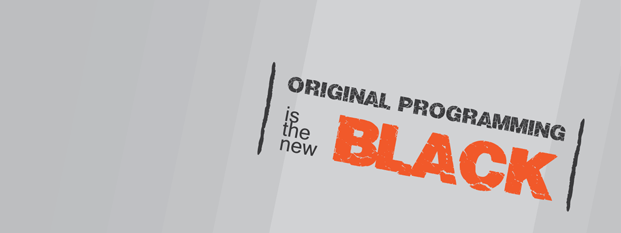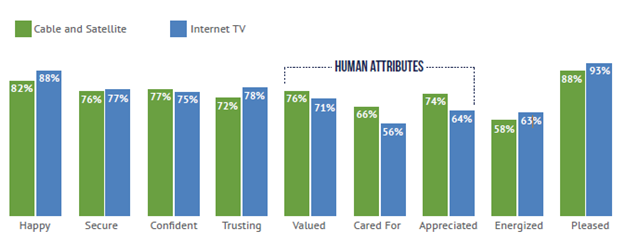
Original Programming is the New Black
Netflix had a great year. Its original show House Of Cards was nominated for an Emmy award for outstanding drama series. Orange is the New Black is one of the most talked-about shows in recent memory. And in the third quarter of 2013, Netflix surpassed its rival – HBO – in number of subscribers (read more about that in the Huffington Post article here).
Nielsen, known primarily for measuring the popularity of television shows, is catching on to this trend and will soon begin counting people who watch television via the Internet (including Netflix and Amazon) in addition to traditional means. According to this article from CBS in February 2013, the proportion of households in the US without a television receiving broadcast, cable or satellite signals is now 4.2%, up from just 1% in prior years. That number is only going to grow as companies like Netflix, Amazon, Hulu, and new entrants continue to provide alternatives to traditional media and continue to develop quality original content that rivals the most popular and critically-acclaimed cable television shows.
Blunting the Cord-cutters
As more people turn to non-traditional channels for entertainment, the role of the traditional cable provider is – necessarily - changing. It’s difficult for traditional providers to compete with on-the-go, on-demand programming. And new players have the added advantage of not being bogged down with legacy systems and processes. But traditional cable providers have a secret weapon that, when brandished appropriately, may have the power to create unique experiences that could prevent some customers from cutting the cord. And that weapon is their employees.
When their powers are leveraged appropriately, employees can forge an emotional connection with customers, creating a personal, positive, memorable experience. Sure, Internet providers can get “personal” by recommending content customers might like based on viewing habits, but they can’t empathize after a long day at the office nor can they break protocol in order to go above and beyond for the customer. That is not to say that traditional cable companies do this particularly well but the possibility is there – the opportunity (and advantage) to make the experience personal through human interactions is very real.
PeopleMetrics recent independent research, the 2013 Most Engaging Customer Experiences study, found that customers of top-performing traditional media and communications companies are more likely to agree that an employee went above and beyond for them when compared to the industry average. This action of exceeding expectations helps to create a positive emotional memory, making traditional cable customers feel cared for and appreciated. And it’s these higher level emotions that build connections with customers in a way that Internet companies can’t. Traditional cable companies can retain their customers – even in the face of digital competition – by creating an experience that’s uniquely human; one that can only take place offline.
When employees intervene and do something special for the customer, the emotions that result are of a higher magnitude than simply being “pleased” or “happy”. To be able to create these emotional reactions through compassionate, caring employees is the unique advantage of traditional cable companies. Through people these companies can create more lasting, memorable experiences, especially when responding to customer problems. And this, in turn, leads to higher levels of customer advocacy.
How to Fight Back: Empower and Listen to Employees to Leverage the Human Advantage
There are two levers traditional cable companies can pull to gain a greater advantage over their non-traditional competitors. Both of these help to forge stronger bonds through managing human connections.
1. Give employees free reign to go above and beyond for the customer.
If you hire, coach and train the right employees, you can have trust in them to do what is right for your customers. Strip out the protocol and checklists and remove any hint of punishment for risk-taking and let your humans free to create positive lasting memories for customers.
2. Ask employees for their opinion.
What is their perspective on the customer experience? This inside-out approach will allow you to gather actionable feedback from your front-line employees about what customers want, what pains them and what help employees need to go above and beyond for them. Their suggestions could lead to streamlined processes, removal of internal barriers, operational efficiencies and a greater understanding of what really makes a personalized experience for subscribers.





 (1).png)